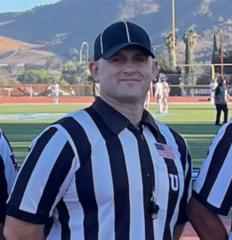Activity
Mon
Wed
Fri
Sun
Oct
Nov
Dec
Jan
Feb
Mar
Apr
May
Jun
Jul
Aug
Sep
What is this?
Less
More
Memberships
PMP
9.6k members • Free
Castore: Built to Adapt
310 members • Free
Endless Evolution w/ Duffin
2.2k members • Free
The Stronger Human
22.7k members • Free
6 contributions to Castore: Built to Adapt
Postpartum supplements and peptides
Two part question on this one. First are there any additional vitamins and minerals that would be beneficial postpartum while breastfeeding? My wife is currently taking pure encapsulation prenatal as well as iodine, magnesium, omega3, b complex, and choline. Also I know there’s no published research on this, but what are people’s opinions on peptide use to speed healing while breastfeeding? I’ve seen some recommend bpc157 and kpv while others suggest staying away from any peptide use until finished breast feeding.
Timing for binders
My doctor told me I needed to take Quicksilvers Ultra binder for a few months. I know not to take it around food and supplements, but is there an optimal time to take them? I wasn’t sure if first thing in the morning, pre or post workout, pre sauna, or if it really doesn’t matter as long as I’m consistent.
Unlock 90% More Strength Without Lifting Heavier: The Neurological Secret Your Workouts Miss
Strength neurology shows that most people have been training only a fraction of their true strength potential. Traditional strength programs, even advanced ones, mainly target about 10% of the brain’s control over force production. The other 90%, which comes from reflexive, automatic tone in the muscles, is rarely trained. There are two main pathways to voluntary strength. The first is increased neural drive, the conscious pathway where the motor cortex sends signals down the spinal cord to make muscles contract. This can be trained through heavy lifting, explosive training, and practicing specific movement patterns. The second is improved reflexive tone, the unconscious pathway that provides background activation of muscles through reflexes, balance systems, and postural control. This pathway is regulated by deep brain and brainstem structures, especially the cerebellum and the pontomedullary reticular formation (PMRF), and is responsible for about 90% of strength output. Reflexive tone stabilizes joints, optimizes posture, and sets the starting tension that allows muscles to produce force quickly and efficiently. When reflexive tone is optimized, motor units are already partially activated, neural recruitment is faster and more synchronized, and less energy is wasted. When tone is poor, stability suffers, force output is limited, and performance feels inconsistent. The brain’s cortex sends about 10% of its output directly to voluntary movement, while 90% goes through the cerebellum and PMRF to regulate axial (core and postural) muscle tone. The PMRF processes sensory input from mechanoreceptors and adjusts tone accordingly, meaning that poor tuning here undermines stability and strength. Most strength programs improve the 10% pathway but don’t directly train reflexive tone, which is like upgrading the software on your phone without fixing the operating system. Accessing the reflexive tone system requires drills that give high-quality sensory input to the cerebellum and PMRF. Visual system drills like eye tracking and gaze stabilization refine visual-vestibular integration. Vestibular activation through head tilts, rotations, and balance work stimulates key tone-control pathways. Proprioceptive training like joint position matching and perturbation drills improves joint and muscle feedback. Cross-lateral integration drills like crawling patterns enhance communication between brain hemispheres. Voluntary drive is like the horsepower of a race car, while reflexive tone is like the suspension system. Without a good suspension, you can’t use all the power effectively. Improving reflexive tone pre-activates stabilizers, makes movements more efficient, and can lead to rapid strength gains even without increasing load. To maximize strength, you should keep training the 10% pathway with heavy and explosive lifts but also unlock the 90% pathway by targeting the cerebellum and PMRF with sensory-rich drills. Integrating these into warm-ups and accessory work primes the nervous system so that both systems work together, turning your body from a tuned street car into a high-performance race machine.
The Coach’s Protocol — Pulling Back the Curtain
The members have spoke and I listened....Most coaches talk about principles. Some share theory. Very few show you exactly what they do themselves. about to change that. I’m opening up my personal playbook, the protocol I run on myself, to show you how I structure my training, nutrition, supplementation, peptides, and recovery strategies to stay at the top of my game. This isn’t a “one-size-fits-all” plan. It’s the real system I use, built from: - Lab data and cellular feedback loops - Peptide science and mitochondrial optimization - Periodized training matched to performance goals - Nutrition timing dialed to physiology, not fads You’ll see the exact tools, dosages, timing, and reasoning I use and how I adjust based on metrics, recovery, and results. If you’ve ever wondered how a coach integrates the science into a living, breathing system… this is your chance to see it in action. Drop a 🔥 below if you want to see the full breakdown of The Coach’s Protocol.I will likely do this as a webinar. Let me know your thoughts who would be interested in seeing this to kick off our monthly case study feature.
Sleep peptides
Lets talk about taking DSIP and tesamorelin at night?? Whats everyones thoughts for your best nights sleep??
1-6 of 6
Active 11h ago
Joined Aug 1, 2025
Powered by



